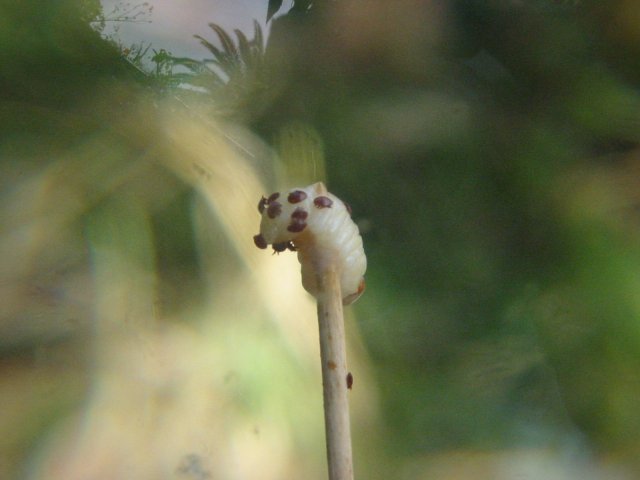
![]() Brood cell size of Apis Mellifera modifies the reproductive behavior of Varroa destructor
Brood cell size of Apis Mellifera modifies the reproductive behavior of Varroa destructor
This study is the first report that cell width can restrict the reproduction of Varroa destructor. Moreover, we demonstrated that an aspect of the physical environment can modulate the reproductive behavior of this parasite, resulting in new hypotheses on relations between nutrition and reproductive success of the mites.
![]() Die Größe der Brutzellen von Apis Mellifera ändert das Fortpflanzungsverhalten von Varroa Destructor.
Die Größe der Brutzellen von Apis Mellifera ändert das Fortpflanzungsverhalten von Varroa Destructor.
Diese Studie ist der erste Bericht dass die Zellgröße die Vermehrung von Varroa destructor einschränken kann. Darüber hinaus konnten wir zeigen, dass ein Aspekt der physischen Umgebung die Fortpflanzungsverhalten dieser Parasiten modulieren können, was zu neuen Hypothesen führt über die Beziehungen zwischen Ernährung und Fortpflanzungserfolg der Milben.
![]() El tamaño de la celdilla de Apis mellifera modifica el comportamiento reproductivo de Varroa destructor
El tamaño de la celdilla de Apis mellifera modifica el comportamiento reproductivo de Varroa destructor
Este estudio es el primer informe comunicando que el tamaño de la celdilla puede restringir la reproducción de Varroa destructor. Más encima nos hizo demostrar que un aspecto del entorno físico puede modular el comportamiento reproductivo de este parásito, dando lugar a nuevas hipótesis sobre las relaciones entre la nutrición y el éxito reproductivo de los ácaros.
We undertook a field study to determine whether comb cell size affects the reproductive behavior of Varroa destructor under natural conditions. We examined the effect of brood cell width on the reproductive behavior of V. destructor in honey bee colonies, under natural conditions. Drone and worker brood combs were sampled from 11 colonies of Apis mellifera. A Pearson correlation test and a Tukey test were used to determine whether mite reproduction rate varied with brood cell width. Generalized additive model analysis showed that infestation rate increased positively and linearly with the width of worker and drone cells. The reproduction rate for viable mother mites was 0.96 viable female descendants per original invading female. No significant correlation was observed between brood cell width and number of offspring of V. destructor. Infertile mother mites were more frequent in narrower brood cells.
…


